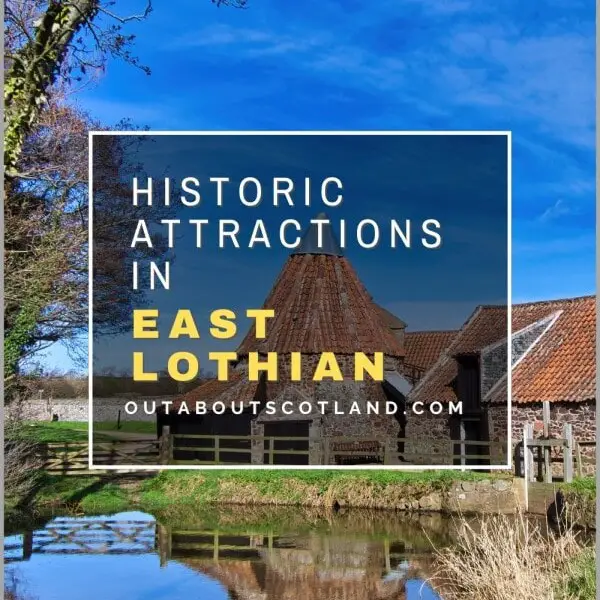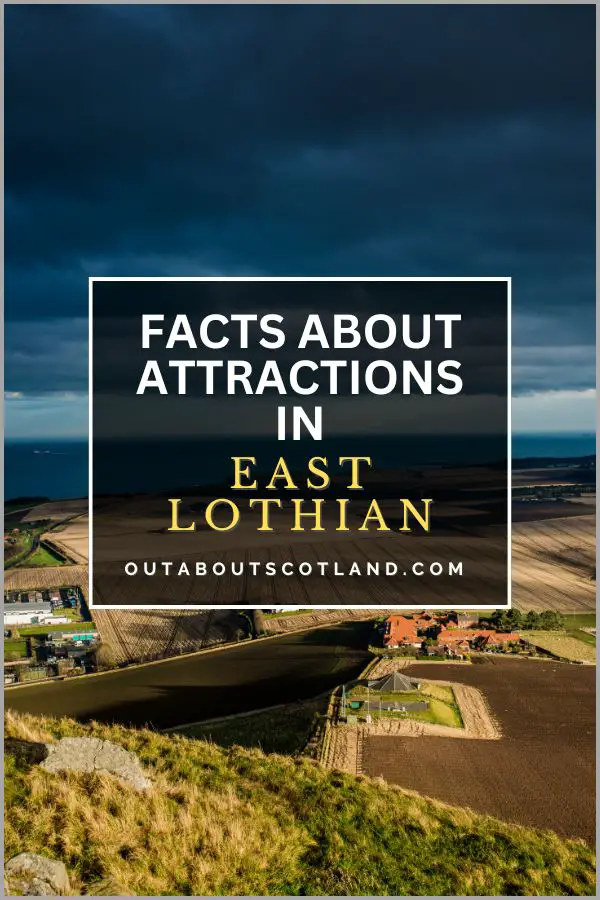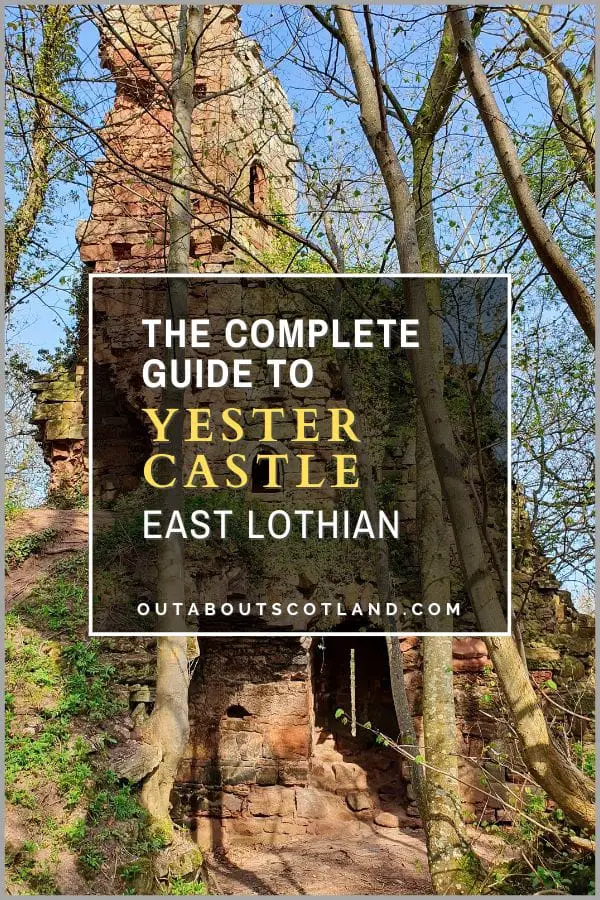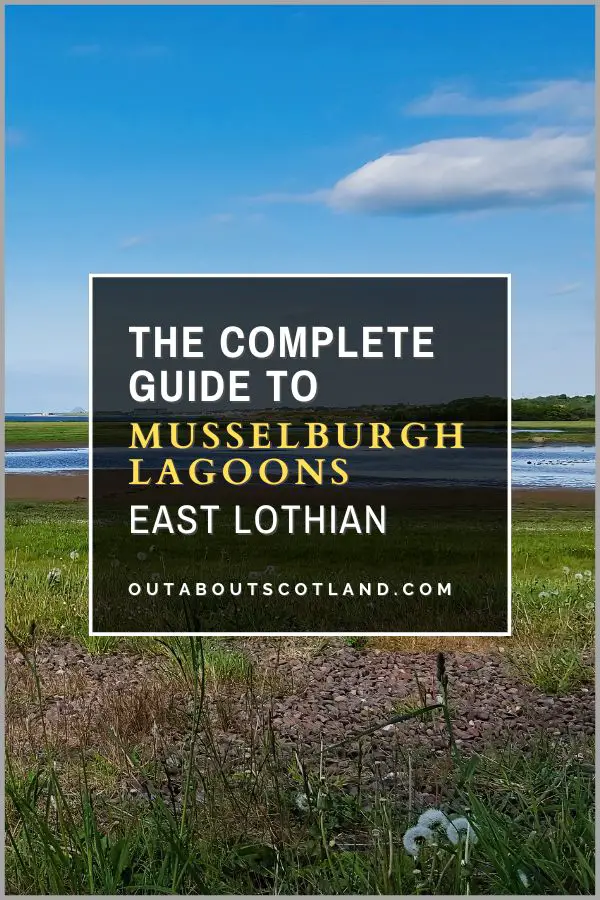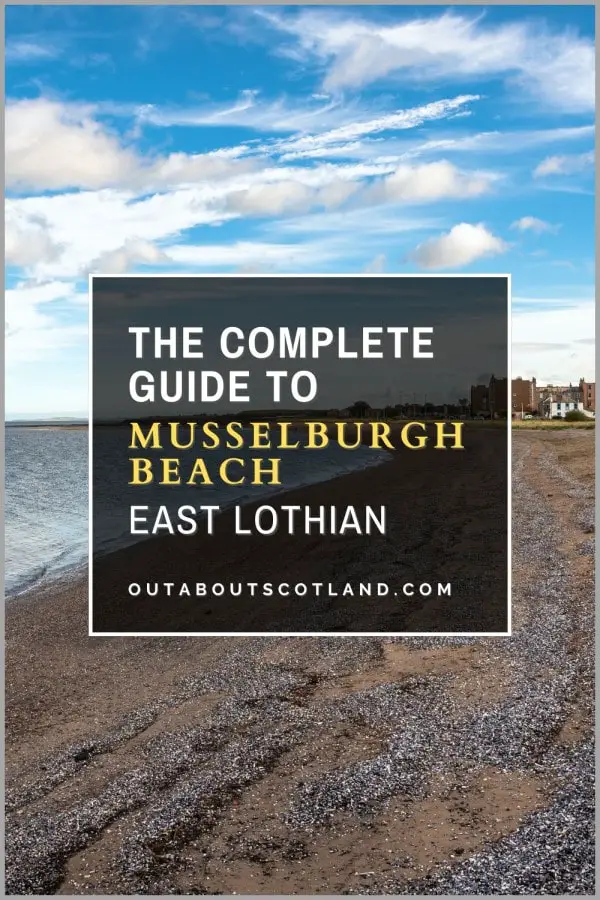The historic county of East Lothian is situated to the east of Edinburgh and Midlothian and to the north of the Scottish Borders. Although it isn’t one of the main tourist destinations in Scotland it has some of the country’s most interesting historic sites, including Tantallon Castle, Hailes Castle, and the National Flag Centre.
Discover the best historic attractions in the county with this complete visitor guide, which includes suggestions for places to visit, including the main towns.
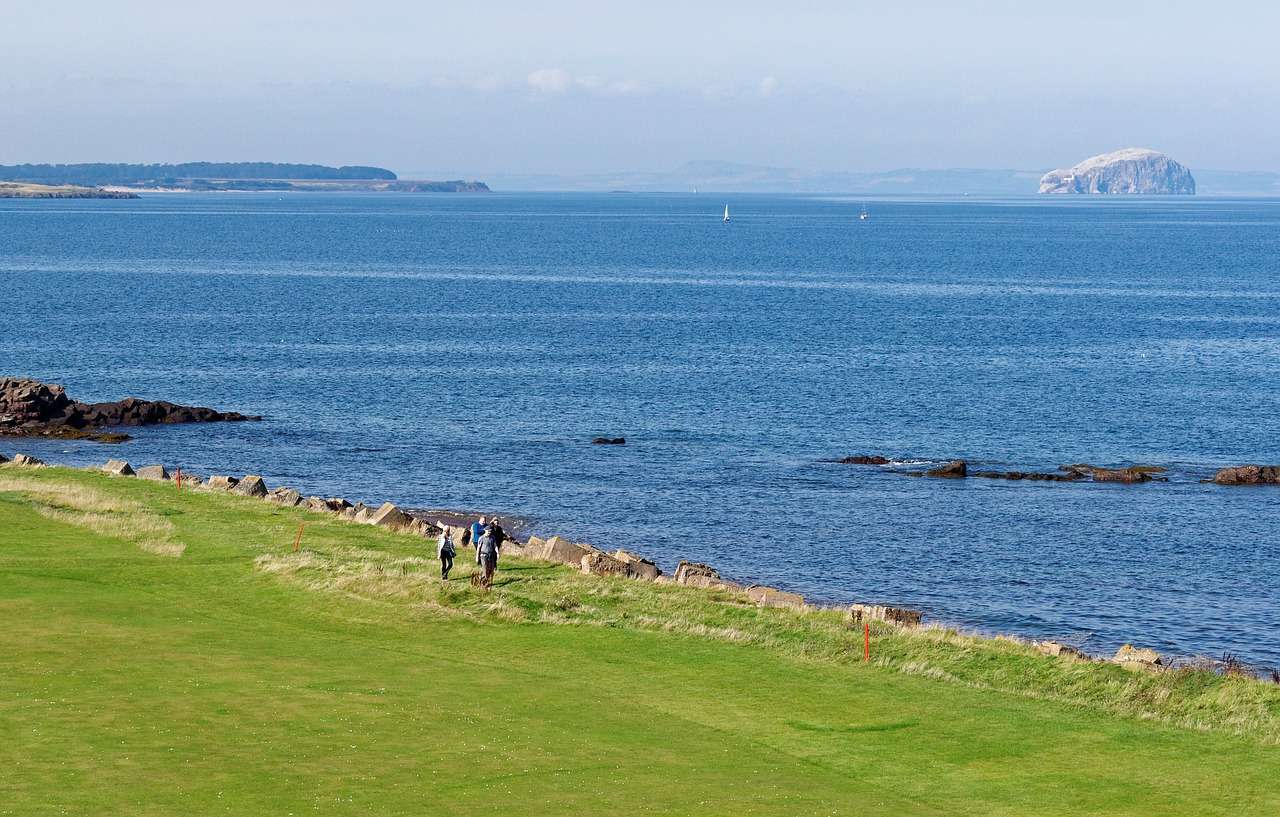
East Lothian is a historic county and council area in the southeastern part of Scotland, bordering the City of Edinburgh to the west, the North Sea to the north, the Scottish Borders to the south, and Midlothian to the southwest. Known for its picturesque towns, fertile farmland, rolling hills, and scenic coastline, East Lothian is often referred to as the ‘Garden of Scotland’ due to its abundant produce.
East Lothian’s coastline features a mix of beautiful sandy beaches, rocky cliffs, and dunes, making it a popular spot for beachgoers, bird watchers, and nature lovers. The county’s interior is characterised by a landscape of gentle hills, woodlands, and rivers, dotted with farms and small villages.
In addition, the area offers numerous opportunities for outdoor activities such as hiking, cycling, and watersports, with the John Muir Way long-distance footpath stretching across the region. Wildlife enthusiasts, meanwhile, can explore nature reserves and country parks as well as natural wonders like Bass Rock and North Berwick Law.
Perhaps most importantly for tourists, East Lothian is steeped in history and features several impressive historical sites. Notable landmarks include Tantallon Castle, a dramatic mediaeval fortress on a clifftop overlooking the Firth of Forth, and the ruins of Dirleton Castle which has picturesque gardens.
Dirleton Castle
- Address: Dirleton, East Lothian, EH39 5ER
- Contact details: Telephone: 01620 850 330
- Out About Scotland complete guide: Dirleton Castle

Dirleton Castle can be found a short distance from Yellowcraig Beach in the quiet East Lothian village of Dirleton. Although it’s not one of Historic Environment Scotland’s biggest sites, it’s definitely worth visiting. The castle is in a great location thanks to nearby beaches like Yellowcraig and Gullane, and North Berwick is just up the road with its quaint craft shops and cafés.
Visitors looking for more history will find the dramatic Tantallon Castle a little further around the coast, and families can include a trip to the National Museum of Flight, which is just 6 miles to the south.
There’s not a huge amount going on in Direlton village, but the castle is a great place to visit and it has a couple of features that might surprise you. First, it has the world’s largest herbaceous border. Even if you’re not particularly interested in gardens, you’re going to like the one at Dirleton. Second, the entrance towers are some of the largest and oldest in Scotland.
Other points of interest are the dovecote that once housed more than a thousand pigeons (a popular food source in the Middle Ages) and the cavernous underground cellars where grains and beer were stored for the lean winter months.
Dunbar Harbour
- Address: Dunbar, East Lothian, EH42 1HU
- Contact details: NA
- Out About Scotland complete guide: Dunbar Harbour
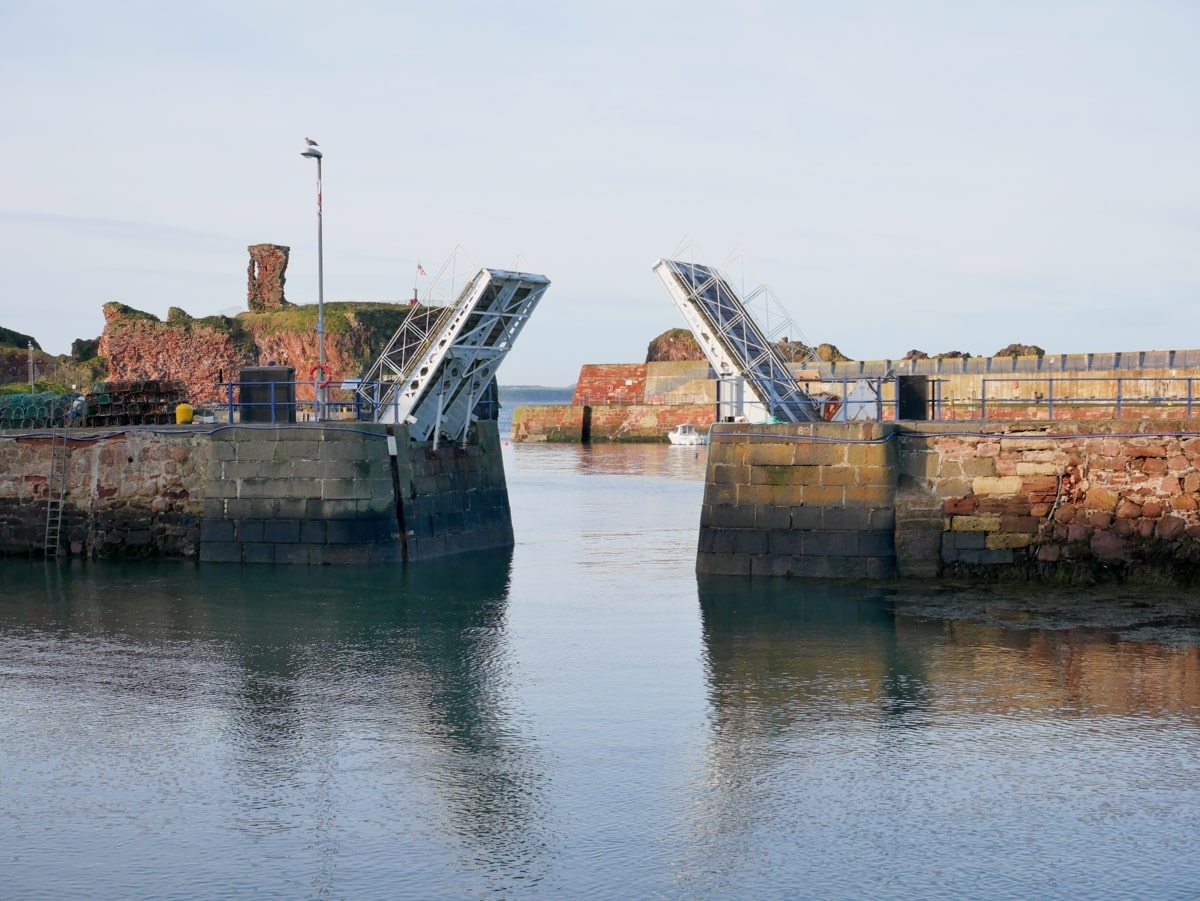
Dunbar might not be the first place you think of when it comes to tourist attractions, but this historic town has a surprising amount of things to see and do. As the birthplace of famed conservationist John Muir, Dunbar is proud to have a museum devoted to him as well as a large nature reserve next to Belhaven Beach, and there are a number of superb golden beaches on either side of this section of East Lothian’s coastline.
Another attraction that’s often missed by visitors is the historic 17th-century fishing harbour on the eastern edge of the town. The harbour is still used by commercial fishing vessels but it’s a world away from how it would have looked in the 1600s when Dunbar was one of Scotland’s busiest herring ports.
Walking along the 300-year-old harbour walls is like taking a wee trip back in time, as much of the original harbour is still intact, including the Dunbar Battery. The battery had several uses over the years as a weapons store and a military hospital, but these days it’s mainly used as an open-air concert venue.
During the day, tourists are welcome to climb the battlements to view the panoramic views of Dunbar’s coastline, and there are information panels throughout the site that explain the harbour’s use as a fishing port and a military base over the years.
An even older historic building is Dunbar Castle, which lies on the opposite end of Victoria Harbour. This is a small fortification that’s sadly off-limits to the public, but it’s worth viewing as multiple fortifications have stood on the site for the best part of 2,000 years.
Those looking for a little more action can charter boats that will take them into the North Sea for sea fishing experiences, and there’s also a dive school that takes visitors around several wrecks close to Victoria Harbour.
Hailes Castle
- Address: Hailes Castle, Haddington, EH41 4PY
- Contact details: NA
- Out About Scotland complete guide: Hailes Castle

The sleepy, rural area between Haddington and East Linton is one place in Scotland that might have no intention of visiting, but I can at least suggest one good reason why you should: Hailes Castle.
This 14th-century ruin is one of the best hidden gems in East Lothian, as it’s set in a picturesque location next to the River Tyne, with nearby footpaths that thread their way deep into the heart of the county’s countryside.
There are lots of great walks throughout the area which makes Halies Castle the perfect place to forget about the hustle and bustle of Edinburgh (just 40 minutes away by car), but it’s also an interesting historic attraction in its own right.
Like Dirleton Castle, Hailes is really just a collection of ramshackle-ruined walls, but you can still get a real sense of how grand it must have been back in the 1300s. The Hepburn family (the original owners of Hailes Castle) were renowned for entertaining guests, and they would have had a great time at this attractive riverside setting.
While you won’t be able to have your own grand banquet on the castle grounds, the bank of the River Tyne is a perfect spot for a summer picnic. Just don’t forget to pack your Scotch eggs (which you can learn how to make in this article: Traditional Scottish Food).
The National Flag Centre
- Address: Athelstaneford Parish Church, Main Street, Athelstaneford, East Lothian, EH39 5BE
- Contact details: email info@scottishflagtrust.com
- Out About Scotland complete guide: National Flag Centre
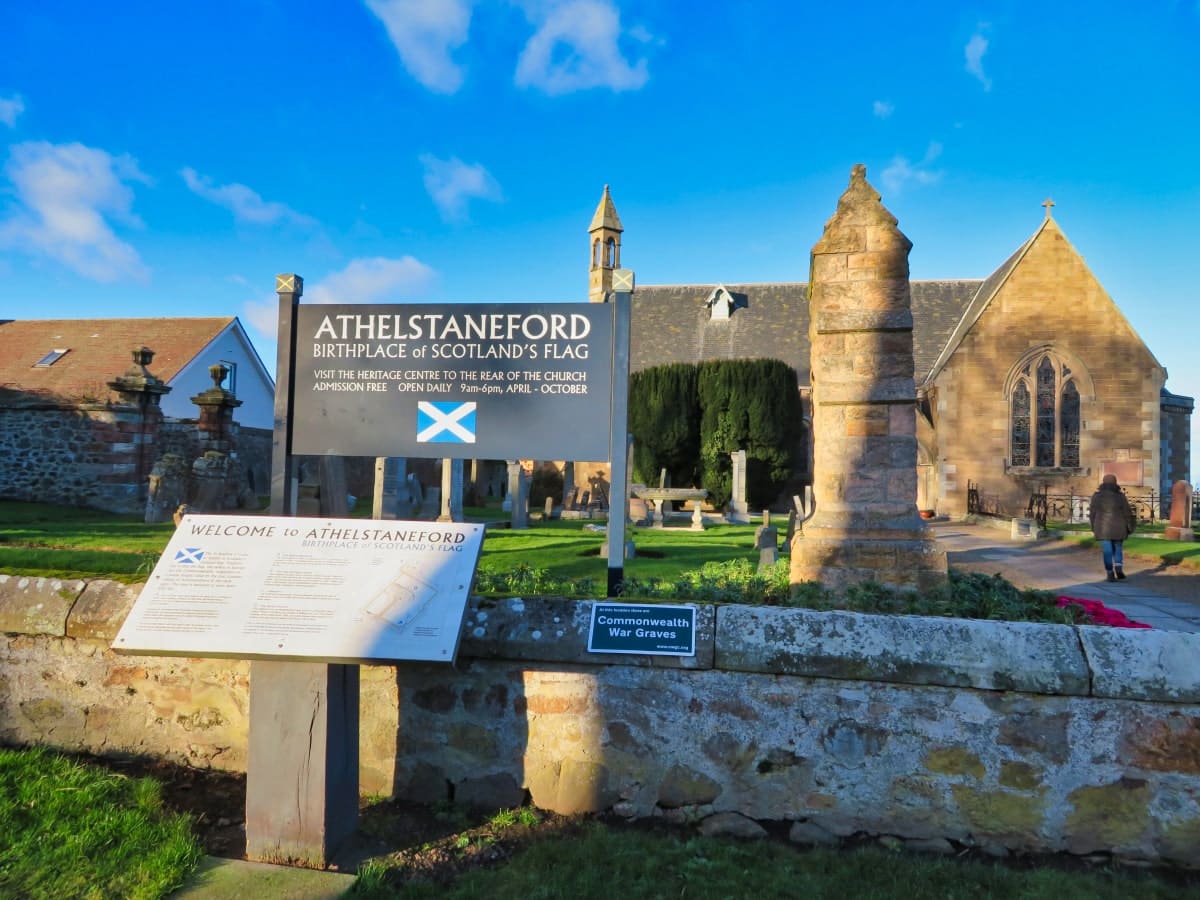
The National Flag Centre is one of the smallest attractions in East Lothian, as well as being one of the most difficult to find. It’s located in the wee village of Athelstaneford which is set deep in the heart of the county, around 3 miles (4.83 km) northeast of Haddington.
Legend has it that the Saltire, the national flag of Scotland, was founded in AD 832 when a battle was fought just outside the village boundary. An army of Scots found themselves pitched against a much larger army of Anglo-Saxons, and as the Scots King Angus prayed for victory, the clouds above his head formed a white cross set against the brilliant blue of an otherwise cloudless sky.
The Scots won the battle, and from that moment on, they took the image of a white cross against a blue background as their national flag, which is now the oldest flag in Europe.
Visitors to Athelstaneford will find a small museum dedicated to the Saltire behind the village church which has several information panels as well as an informative video that explains the battle in detail. Curiously, this museum is the only one in Scotland that’s located inside a doocot (an historic pigeon coop), so as you can imagine, it’s not exactly big, but it’s certainly interesting.
After seeing the museum, visitors can take a pleasant walk through the countryside around Athelstaneford where they’ll get a good view of the landscape that inspired the Saltire. The waymarked trail starts opposite the church and continues across fields to the single-story 16th-century Barnes Castle before finishing at the Hopetoun Monument, which is a memorial dedicated to the 4th Earl of Hopetoun.
The monument is privately run but is open for free entry most days, with a winding staircase up the tower that takes visitors onto a platform that has unrivalled views of East Lothian’s countryside.
North Berwick Law
- Address: Law Road, North Berwick, East Lothian
- Contact details: Telephone 01620827459 (Countryside officer)
- Out About Scotland complete guide: North Berwick Law
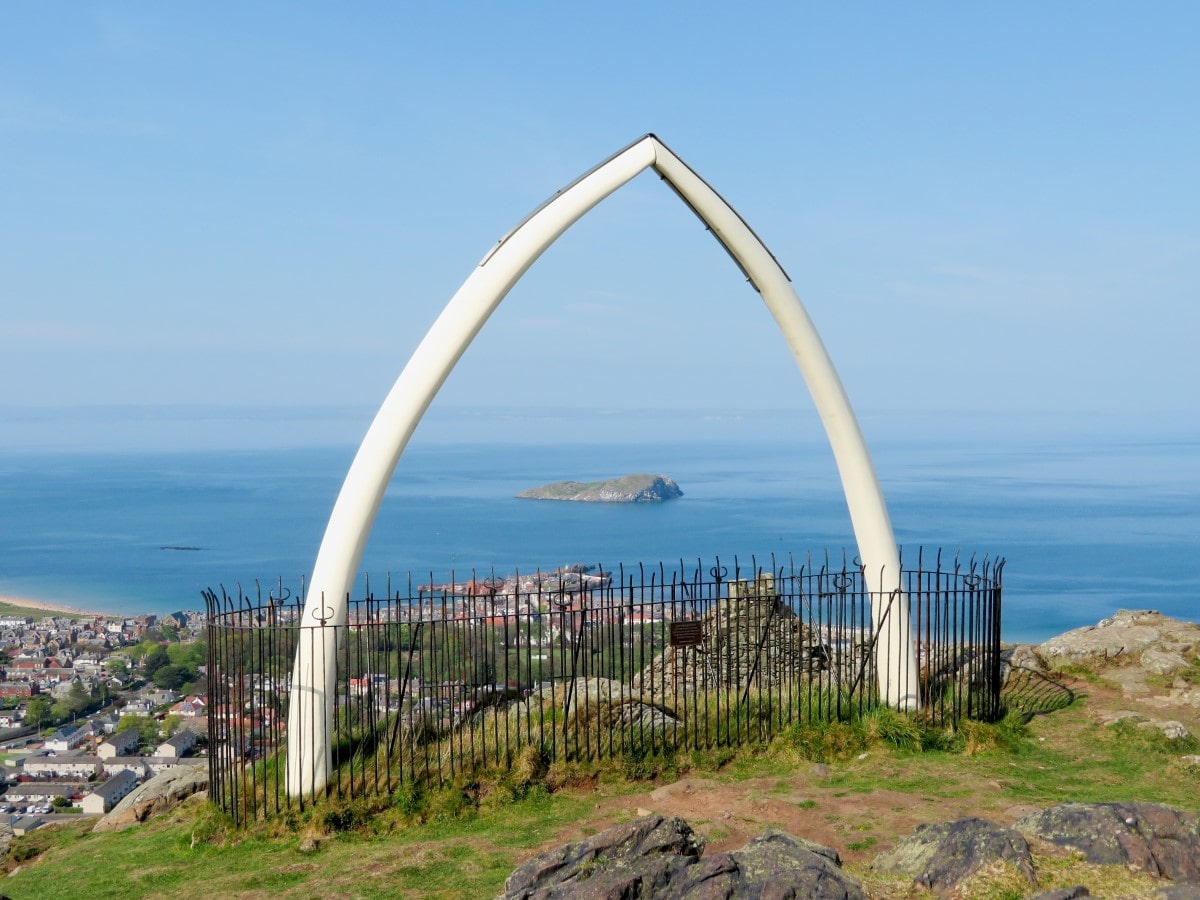
If you’ve ever been to North Berwick, you might have seen an enormous hill dominating the landscape around East Lothian’s northeast corner. This giant landmark is North Berwick Law, a 190-meter-tall volcanic plug situated to the south of the town. It’s easy to find Berwick Law as it’s well signposted, so if you’re in the town to enjoy its beaches, shops, or seabird centre, it makes a nice addition to a family day out.
There’s a winding path that runs all the way to the top of Berwick Law from the car park at the bottom, which, although not a long walk, is quite steep, so it’ll likely take the best part of an hour to complete. Once you get to the summit, prepare to whip your camera out because the views are nothing short of stunning.
Berwick Law has been used for hundreds of years as a lookout post and there’s an old WWII bunker still up there, gazing out across the Firth of Forth for any signs of a German invasion. Another historic point of interest is the enormous whalebone sculpture which is a tribute to the whales that Scotland’s whaling industry hunted throughout the North Sea in the Victorian era.
Thankfully, the whaling industry died out for good, but the two bones (don’t worry, they’re fibreglass replicas) are an interesting reminder of those times.
Prestongrange Museum
- Address: Morison’s Haven, Prestonpans, East Lothian, EH32 9RX
- Contact details: Tel 0131 653 2904
- Out About Scotland complete guide: Prestongrange Museum
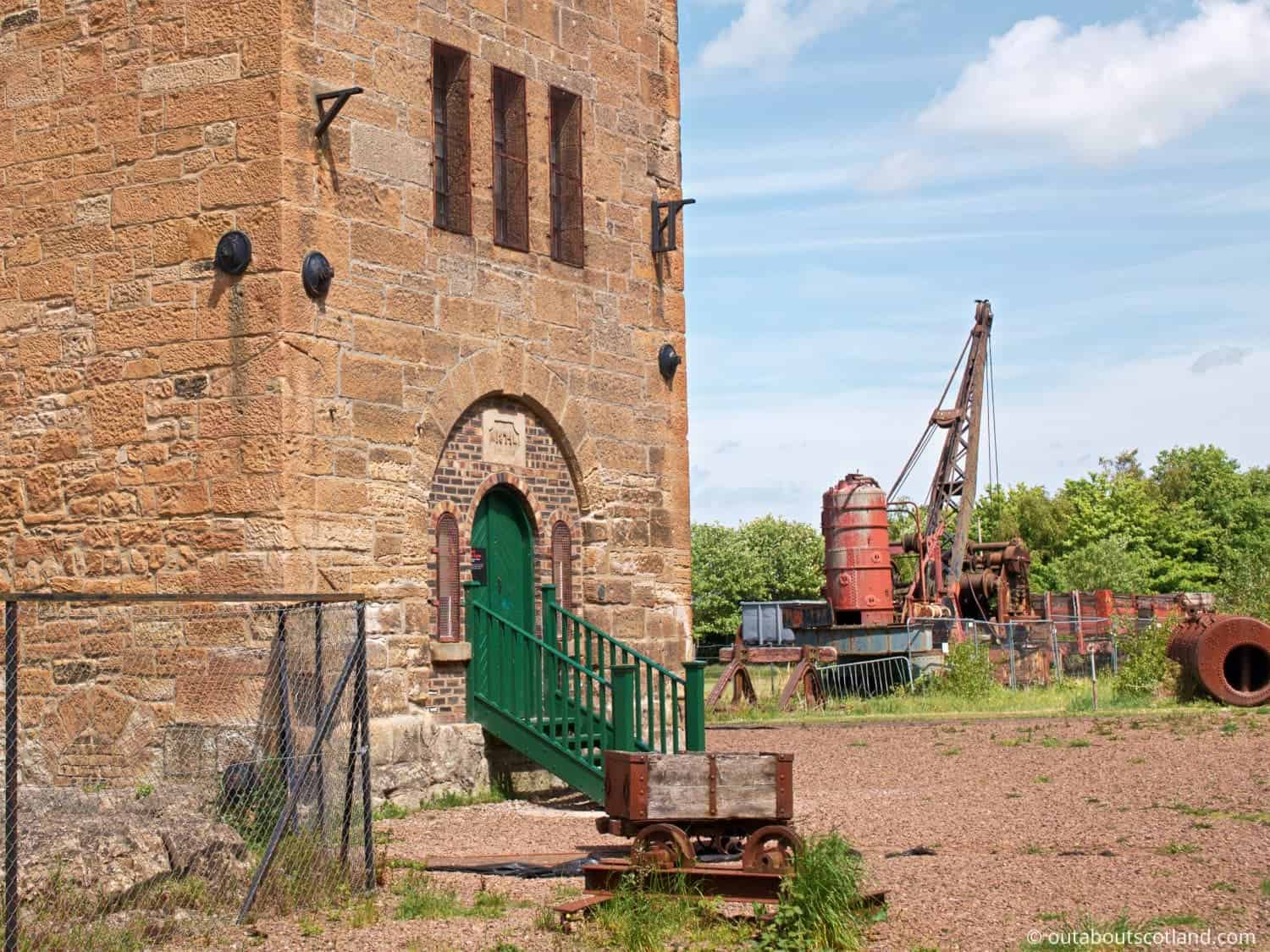
Prestonpans, near Musselburgh, is a prime example of East Lothian’s long-gone mining industry. Like many of the county’s rural villages, Prestonpans lies on a large seam of coal, but what sets it apart is the fact that the village is close to the sea, which is the reason why it also had a profitable salt-panning industry for hundreds of years.
For over 800 years, the harbour at Prestonpans saw goods sail in and out in quantities that rivalled Leith in Edinburgh, but with the decline in coal mining in the 1960s, the port was abandoned, as was the mine at Prestongrange.
Today, the buildings that comprise Prestongrange have been partially restored and are accessible to the public as a free-to-visit open-air museum complete with an audio tour. It’s not as impressive as the National Mining Museum in Gorebridge, admittedly, but it’s an interesting place to visit and there’s enough to see to keep visitors occupied for the best part of an hour.
You’ll find the museum on the B1348 just after the entrance to Levenhall Links. There’s a parking area outside the museum on a tarmacked road that runs past a small visitor centre (only open in summer), with several buildings spread across the site in all directions.
Note that none of these buildings are open to the public except on pre-booked guided tours, but you can walk around the outside of them at any time, and (rather unusually), the audio tour is accessed via a phone number so you can listen to it on your mobile device 24 hours a day.
When you’ve finished exploring Prestongrange, I recommend heading across the other side of the road to try to find the remains of the abandoned harbour, before walking along the seafront to explore Levenhall Links. This is the site where mined rocks and coal slag from the Prestongrange mine were deposited. For many years, the site was cordoned off for safety reasons, but it’s now open as a wildlife reserve. A number of freshwater lagoons have been built inside the renovated waste ground which is a haven for wildfowl, and visitors are welcome to view them from three purpose-built bird-watching hides.
Preston Mill
- Address: Preston Road, East Linton, EH40 3DS
- Contact details: Tel 01620 860426
- Out About Scotland complete guide: Preston Mill
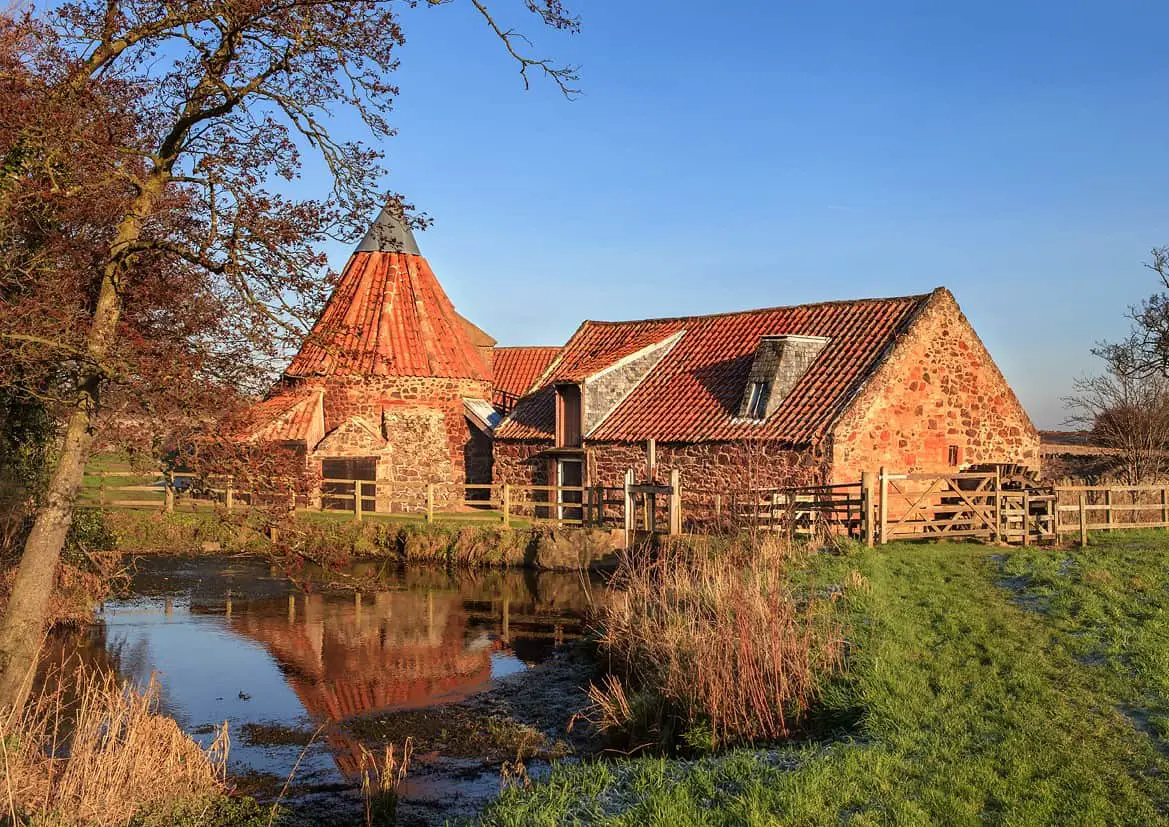
As a county that’s often called ‘the nation’s larder’, it’s no surprise that East Lothian is home to some of the most picturesque farming landscapes in Scotland. There are hundreds of historic farm buildings in the quaint villages that dot this underrated part of the country, but one of the best-known is located next to the babbling waters of the River Tyne.
The sleepy village to the west is the only feature that breaks up the countryside surrounding Preston Mill, which is so scenic that the 134-mile John Muir Way briefly diverts through it on its way to its end point at Dunbar.
The National Trust for Scotland bought the grain mill in the 1950s after it had been in commercial use since the 18th century, and they have now renovated it to resemble how it would have looked in the 1700s. There’s no fee to walk around the outside of the buildings, but there’s a small fee to join guided tours which take visitors inside the buildings to discover how grain was milled back in the day and what life was like for the people who worked there.
There are a couple of unusual features of Preston Mill that have gained it a small amount of fame. First is the unusual Dutch-style conical roof on the mill house, and second is the Phantassie Doocot which is one of the largest pigeon coops in Scotland.
It shouldn’t take much more than an hour to complete a visit to Preston Mill, and there isn’t much else to do in East Linton, but at least the mill is close to a number of other attractions including Hailes Castle, Traprain Law, and the National Museum of Flight.
Seton Collegiate
- Address: Longniddry, EH32 0PG
- Contact details: Tel 01875 813334
- Out About Scotland complete guide: Seton Collegiate
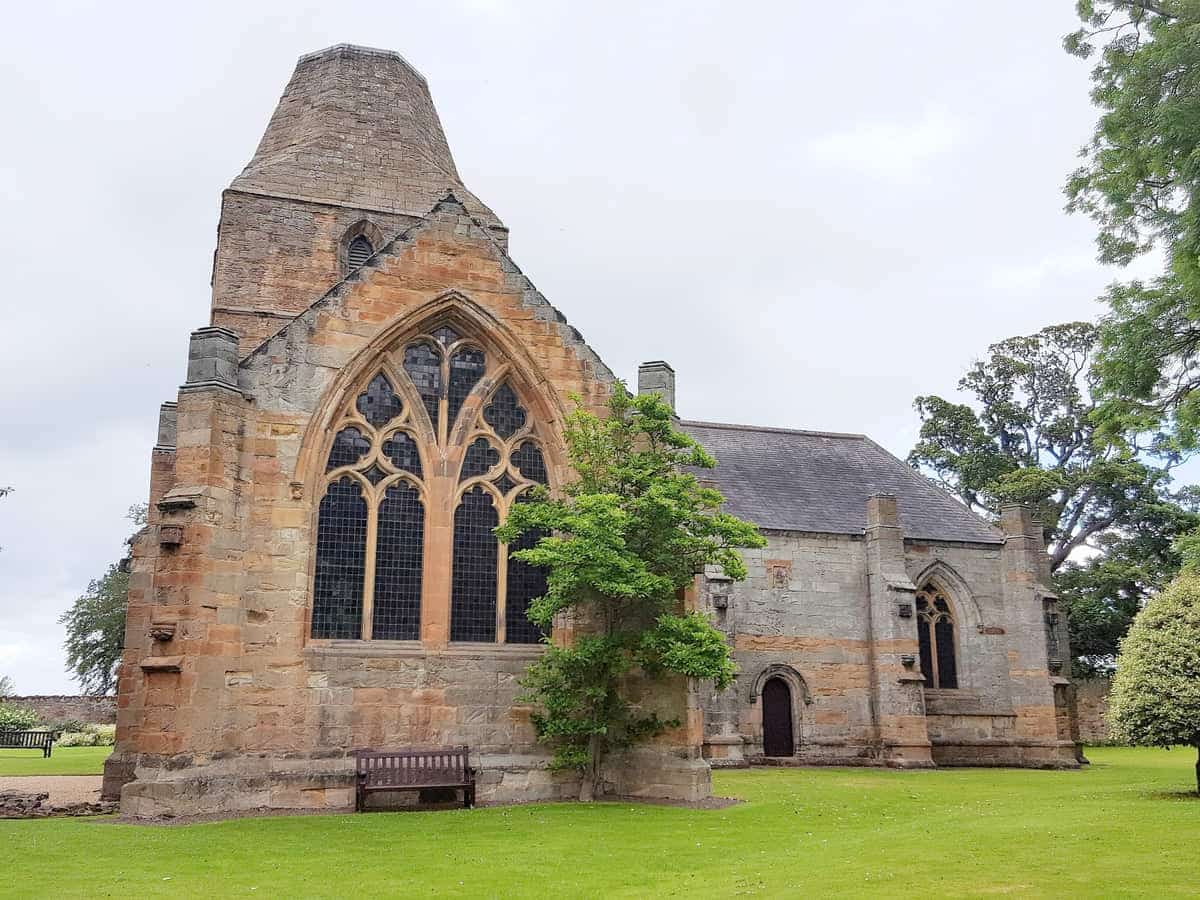
Historic Environment Scotland manages Seton Collegiate, which is located a short distance from the village of Longniddry. The church dates back to the 1200s, but thanks to HES’s restoration efforts, it has been remarkably well preserved. As churches go, this is one of the smallest on HES’s roster but it’s no less interesting for it, as it offers an insight into Scotland’s religious history.
The church’s wealthy owners originally intended for it to serve as a college for the training of priests, but after the Preston family, who supported the Jacobite uprising of 1745, forfeited it when the Jacobites were defeated, the church was abandoned.
Today, Seton Collegiate is a fine example of mediaeval architecture and is a popular attraction thanks to its manicured gardens and intricate stonework. The interior of Seton Collegiate is quite plain, but at least there are lots of information panels that help to explain the story of the Preston family and the reasons why they built the collegiate.
If you’d like to experience more history, you’ll find the Battle of Prestonpans viewing platform a mile west on the A198 where you can view the site of one of the most important battles of the Jacobite uprising. To find it, head to the Meadowmill Sports Centre, postcode EH32 0UA.
Tantallon Castle
- Address: Tantallon Castle, North Berwick, East Lothian, EH39 5PN
- Contact details: Tel 01620 892 727
- Out About Scotland complete guide: Tantallon Castle
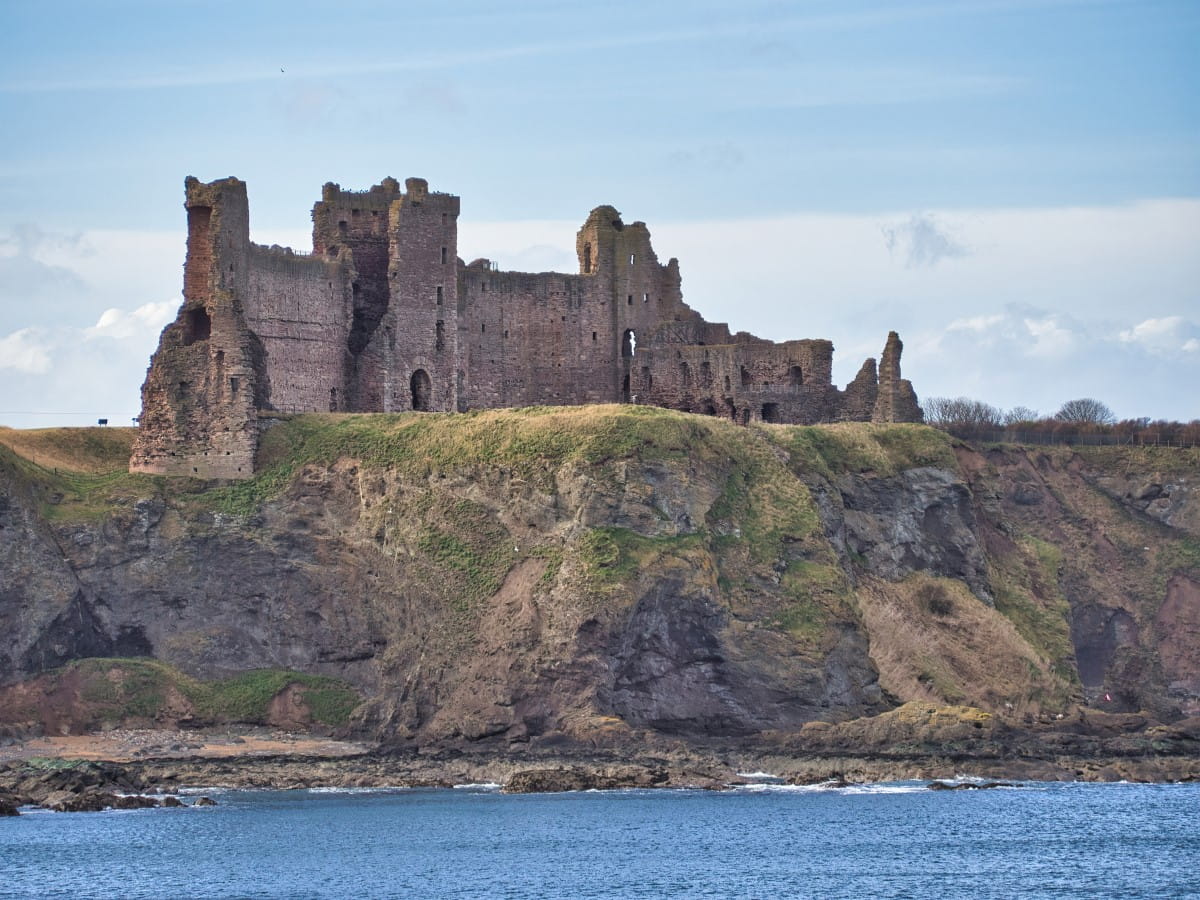
Tantallon Castle is one of my favourite historic sites in East Lothian, not only because it’s a fascinating place but also because it’s situated on one of the nicest stretches of coastline in the county.
The castle is located close to North Berwick so it can be easily combined with a visit to the town, and it also overlooks Seacliff Beach which is an absolute stunner, though very busy at the weekends.
The castle is maintained by Historic Environment Scotland so there are lots of information boards if you want to learn about its history. HES has also restored part of the castle walls and towers so that you can climb to the top to enjoy the amazing views across East Lothian’s countryside.
This sandstone fortress features the last fortified curtain wall that was built in Scotland, and coupled with the cliffs that border its eastern side, it must have been almost impregnable back in the day. Unfortunately, it was left to fall into ruin after the 1650 civil war until it was taken into state care in 1924, so a large part of it is roofless and entirely exposed to the elements.
Historic Towns in East Lothian
There are lots of pretty rural towns and villages in this county, although many of them are quite sleepy (i.e., there’s not much going on), so they might not be quite what you’re looking for if you’ve come to Scotland for an exciting holiday. That being said, if you have a rental car, you’ll be able to get to the nicest parts of the county easily enough, and many of the larger towns are worth visiting in their own right.
North Berwick
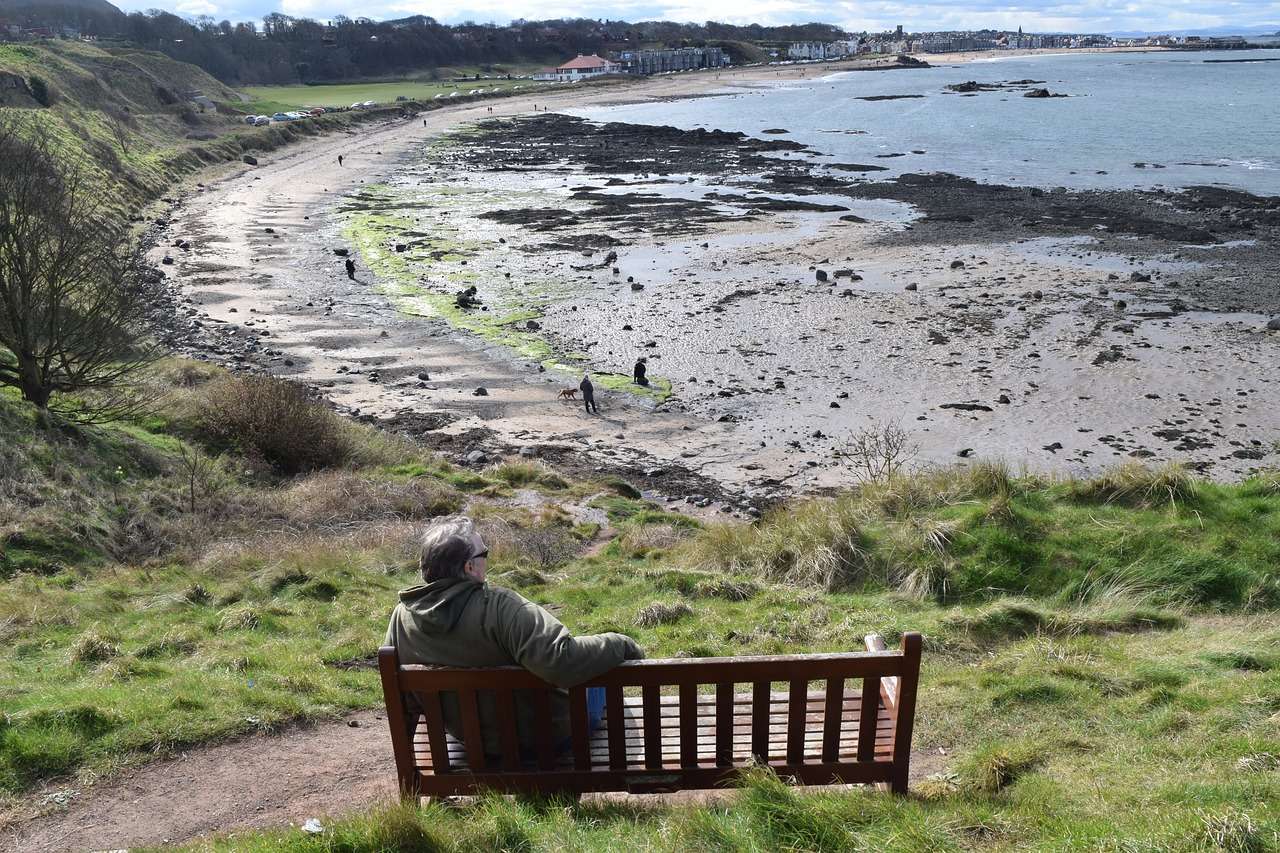
North Berwick is a lovely seaside town on the eastern side of the county, roughly 20 miles northeast of Edinburgh, that has two glorious sandy bays, golf courses to the east and west, and a boatload of popular attractions.
It’s a quaint town with lots of artisan craft shops and nice restaurants, but most people visit it to enjoy the seaside atmosphere. If you stand anywhere on the coastline of North Berwick and look out to sea, you’ll notice the gleaming white pinnacle of Bass Rock jutting out of the waves with clouds of swirling seabirds filling the sky above.
It’s quite a sight, and I totally recommend you visit the Scottish Seabird Centre to take a boat out to the island of Fidra and the Bass Rock to see these natural wonders up close.
Another highlight of the town is something that looks a bit like a volcano rising out of the ground not far from the town centre, and in fact, that’s exactly what it is. North Berwick Law is a 187-metre volcanic hill that offers stunning views at the top, with the dramatic Tantallon Castle clearly visible to the east and Yellowcraig Beach a short distance away to the west.
These attractions alone make North Berwick worthy of a visit, and I have to say this picturesque coastal town is my favourite place to visit in East Lothian on a sunny Sunday afternoon.
Dunbar

Dunbar is located around 30 miles east of Edinburgh and 30 miles north of the English border. There’s a lot of history in the town, and one of the most influential people in the history of conservation was born there, John Muir, who later went on to establish the great American National Parks of Yosemite Valley and Sequoia National Park.
The work of John Muir has been immortalised in Scotland with the 134-mile John Muir Way trail that stretches across the country from Helensburgh in the west to Dunbar in the east, so it’s fitting that Dunbar is the location for a museum devoted to him.
Dunbar is renowned for its record levels of sunshine, and ‘sunny dunny’, as it’s known, enjoys one of the driest summers in Scotland, with a mere 600mm of rainfall annually. This balmy (for Scotland) weather means it’s perfect for enjoying the great outdoors and I can’t think of many nicer places to go for a walk than the nearby John Muir Country Park with its combination of beaches, grassland, mudflats, and forest.
If you’d like to explore the town’s history, then I suggest heading down to Dunbar Harbour and taking a look at the 11th-century Dunbar Castle, which used to be one of the most formidable fortresses in Scotland. These days, it’s just a ruined shamble of walls, but it offers an interesting insight into the history of this quiet East Lothian town.
Musselburgh
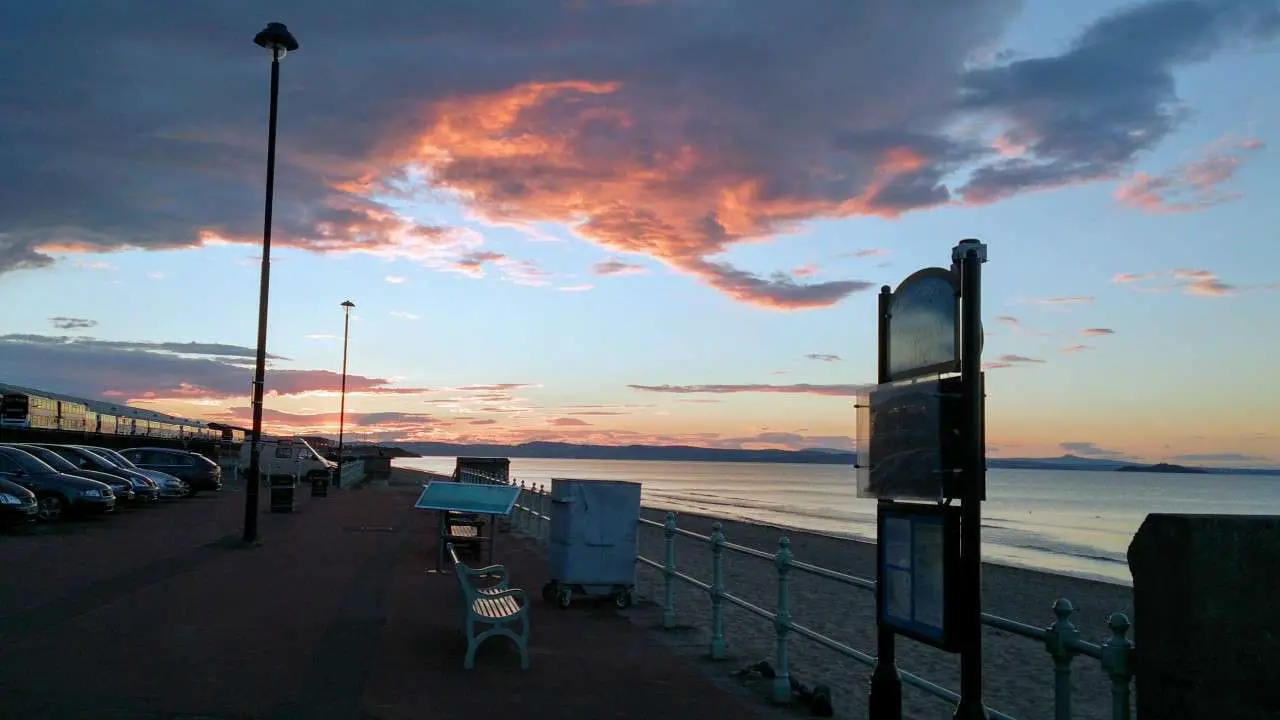
Although Haddington is the administrative centre of East Lothian, the town with the biggest population is Musselburgh. That’s mainly because nowadays it’s basically part of Edinburgh, and you can easily drive or take the bus from the city centre in just 20 minutes.
In fact, as it’s paved the entire way, you could even walk to it if you wanted – not that many people would choose to walk 6 miles through the city when there are speedy Lothian Buses available.
Musselburgh is the next settlement along the Firth of Forth from Leith and it’s most notable for its beach which is usually busy at the weekends with Edinburgh’s residents who are looking for a seaside getaway that’s quieter than Portobello.
Another big draw for visitors is the racecourse, which is the oldest in Scotland, having opened all the way back in 1816. If you like the odd flutter on the horses, then the Musselburgh races are well worth attending and the racecourse has even attained a coveted five-star visitor rating. Take a look at the Musselburgh Racecourse website to view the list of upcoming races.
There’s a long association with sport in Musselburgh as the world’s oldest surviving golf club is located in the town, with the 9-hole Musselburgh Links course being recorded in government records as far back as 1672. The world’s oldest walled golf course isn’t far away either, located between the B1348 and B1361 near Prestonpans.
Haddington
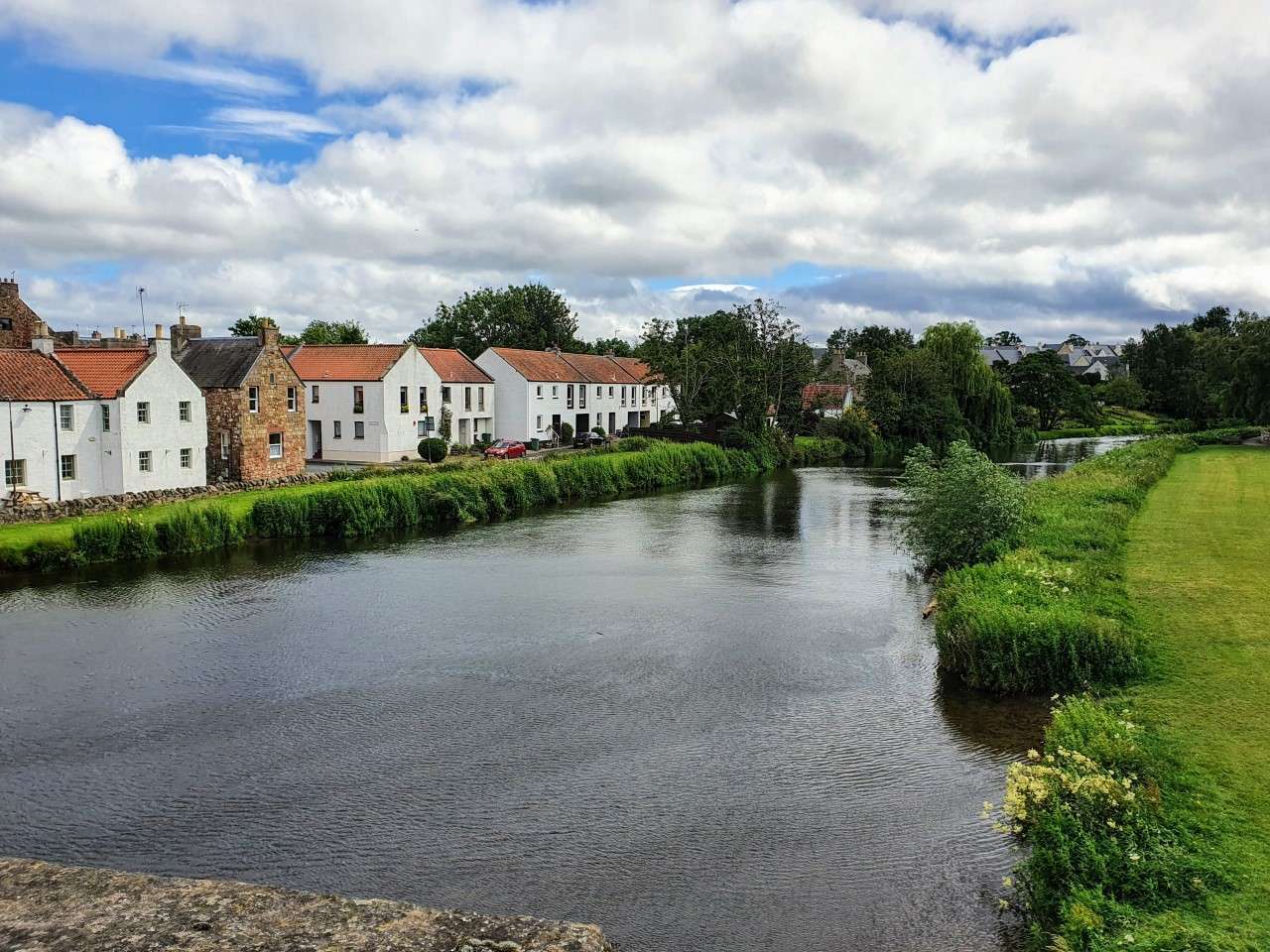
Haddington is the geographical centre of East Lothian, and it’s also the administrative centre. While it’s not a particularly big town there’s a lot of history within its boundaries, and at one point it was the fourth biggest town in Scotland.
You’ll find Haddington around 17 miles east of Edinburgh so it’s easy to get to via the nearby A1 dual carriageway, and the town centre has all the usual country shops as well as a few big retailers, making it a useful destination for shopping if you’re staying in the area.
There’s not a huge amount to do in Haddington, to be honest, as it’s just a sleepy farming community, but there’s a good farmers market held there on the last Saturday of every month and the 700-year-old St. Mary’s Collegiate Church is the biggest parish church in Scotland.
Nearby attractions include the Historic Environment Scotland-managed Hailes Castle, which is free to visit, and Lennoxlove House which is a large 15th-century tower house that’s open to the public for guided tours.
Frequently Asked Questions
What is the weather like in East Lothian?
East Lothian is one of the sunniest and warmest areas of Northern Britain with average minimum temperatures dropping to just 2°c in winter compared to -2°c in the Highlands.
Summer temperatures soar to an average of 20°c compared to less than 17°c in most other parts of the country.
How can I travel to East Lothian?
Using the A1 and A697, you can drive to East Lothian’s main town of Haddington from the English city of Newcastle in just under two hours.
Head west on the M8, and you’ll be able to reach Haddington from Glasgow in around 90 minutes, while the journey from Stirling takes around an hour.
Where are the main towns in East Lothian?
North Berwick is a seaside town on the eastern side of the county roughly 20 miles northeast of Edinburgh.
Dunbar is located around 30 miles east of Edinburgh and 30 miles north of the English border.
Musselburgh is the next settlement along the Firth of Forth from the Edinburgh suburb of Leith.
Haddington is situated approximately 17 miles east of Edinburgh.
What are the top attractions in East Lothian?
Yellowcraig beach, North Berwick Law, Hailes Castle, Dirleton Castle, The National Museum of Flight, Tantallon Castle, John Muir Country Park, The Scottish Seabird Centre, Bass Rock, East Links Family Park.

